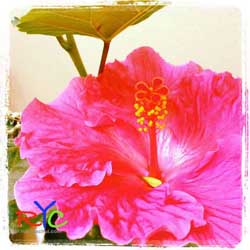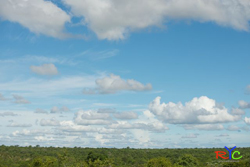20 May 2012
What Makes Photo Apps so Popular
25/05/12 12:33

Today is the day that it was announced that facebook has its own photo app for iPhone. Another addition to the popular photo apps and we might right jump onto it. What makes us doing that?
In the first place we have the photo apps always with us. They are on the phone and the phone goes with us wherever we go. No extra device needed, camera at hand when the opportunity for a photo comes up, when we want to share a moment immediately or want to tell news quickly through a photo. But there is more.
When we use a camera we usually start thinking about settings and when we don’t use a camera on a daily basis we might be insecure about settings and worried, if we do it right. That creates the idea in us that we need to have time when we use the camera to be able to focus on what we are doing in order to do the settings right. We do not have these thoughts with the photo apps on our phone. We just shoot away. We are used to the phone, bonded, holding it in our hands many times per day, it’s always with us. Besides that the photo apps (most of them) do not require knowledge and experience in photography in order to use them. All we need for photographing with apps is our intuition. And our intuition can flourish the best when no thoughts are disturbing it.
Look at the example Instagram. Its point, shoot, filter, share. You are only looking and deciding with what feels nice to you. All intuition. And we love it.
Well, what does that mean for your camera? The camera would love to be your intuitive tool, just like the app. Treat it like an app. Have the camera with you if you can, practice as often as you can, don’t be worried about settings. Shoot away and get rid of the technical fear. There is no wrong or right, there is only learning. Start bonding with your camera!
Ute Sonnenberg, www.rohoyachui.com
How Do We Know Something is New
24/05/12 13:05

Lots of information is coming our way every day and something is new to us when we didn’t know about it before. But it is only new to us, not new in general, it was just not know to us that it exists. So, what about the really new things and how do we recognize them? Is something new, because it is different from the old one or because there is so much resistance towards it?
That with the resistance is usually a good sign in identifying the new. When something is really new it changes the way we see the world or the way we live. It means we have to change; we, and we usually resist changing in the first place, because it puts us out of our comfort zone.
Imagine innovations as the car, the plane, the phone, the iPhone and the cloud. Well, there are always early adapters, but the majority needs some time to get over it that an essential part of their life is changing.
How do you feel about the mirror less camera? I feel personally resistance towards it, although I don’t know much about it and haven’t photographed with it. Does my resistance show that this camera is the innovation in photography? I don’t know. For my part I will wait and see, but isn’t this also such a typical behavior when something is new?
Maybe we should change our approach to the new, not adapt to it, rather embrace it and benefit from the change. And it might be the change it causes, that identifies it as new.
Ute Sonnenberg, www.rohoyachui.com
The Black Box & The Light
23/05/12 12:30

Imagine you are in an empty event venue or club out of opening hours. No lights are on. It is dark. These venues do not have windows. They are like a black box. Empty. The moment life comes into these black boxes is the moment the light goes on. It becomes magical, fascinating, interesting and story telling, supporting the music, the speaker’s or representing a vision or a theme. The box becomes whatever the light makes it to be.
A black box is empty without light and the light needs the black box in order to create whatever it wants to create. Pull it on a bigger scale and we get to the solar system, which has the black mass/substance (scientists are still researching what it is made of) and the light known as the sun. The light shines on objects and the contrast with the black mass creates the stars we see on the sky. Lets go smaller and the sun creates the colors we see in the garden or lets go very small, yet very big, our cameras. The camera is also a black box. The moment we let light into the camera, something is created, life comes into the black box “camera” and an image evolves. Just like with the venue, we decide what light comes in and how it is directed within the box to create the image we want to see. Well, fortunately sometimes the light has its own ideas and surprises us with the results and its own creativity, just like it does in our eyes.
So, what is the relationship between the black box and the light? They need each other. Without light no life and without black box no creation. Light needs darkness – the black box - to be seen and darkness needs light to be filled with life. In photos we call it contrast. A photo without contrast doesn’t have depth or call it life. The duality of light and darkness creates something new. They are a creative couple.
Ute Sonnenberg, www.rohoyachui.com
Innovate Simply Through Photography
22/05/12 11:25

For some reason Innovation seems more in demand, yet harder to do nowadays. It’s probably the pace of demand for innovations that increases the pressure and makes it harder to come up with innovations as per mouse click. Probably also the flood of information and triggers that awaits us every day makes it difficult to see the opportunities for something genuine new through all the clutter. We need help in seeing the innovation that is right in front of us.
Imagine you are in a room that has a beautiful painting on the wall. You walk over there to have a “close look”, standing right in front of it, your nose almost touches the canvas. You want to see, so you go close. What you see is a fragment of the painting, but you are pleased, you can see every single brush stroke in this fragment, every detail. And you might think, well one or another stroke could have been more accurate. When you stop right here in your discovery of the painting you will have only a fragmental view on the artwork.
When you decide to continue, you will start moving away from the painting, backwards, in order to see the complete work to unfold. You create distance in order to see. Now from a few steps back the painting shows its whole beauty. Suddenly the inaccurate brush stroke is part of the whole and essential for its composition. You realize you are looking at a Van Gogh.
Photography is our tool to “step back” in order to see the whole, to create a distance to be able to see. It helps us seeing innovation that is right in front of us, but we don’t see it, because we are to close. Experience it with a little exercise: You don’t like your lounge anymore, but you can’t put a finger on it what it is that disturbs you or where to start making changes? Take a photo of your lounge. Upload it to your computer and look at it. The answer will be right there.
Training in using photography as a tool is available through www.rohoyachui.com , for businesses and interested people.
Ute Sonnenberg, www.rohoyachui.com
Why We Love Photos
21/05/12 16:17

There are certainly scientific studies and explanations why we love photos and it will be most likely something about how our brain processes information or some sort of logical reasoning. But lets look at it from the practical and emotional side, although one cannot separate them, also emotions need to be processed.
For what reason are we taking photos in the first place? We want to capture the moment; the moment with friends, the moment with family, the moment on holiday, the moment we saw the sweet puppy, the moment the baby was born, the moment we saw a beautiful flower. We want to capture the awe, the happiness, the memory, the beauty, all what moves us, all what brings our feelings in motion, emotions. We don’t think about it, we just snap it. When we want to explain something complex we use images and a moment of happiness is something complex and somehow we know that talking about it wouldn’t do it, words are not enough. We need the image to capture a moment in all its dimensions and it is faster too. So we are lazy? We are efficient. Taking a photo is time and energy saving while at the same time misunderstanding is reduced to a minimum.
And there might be something else. When we capture a moment we make this moment eternal, we can take it with us, we can hold it in our hands, we can look at it as often as we want, we make it visible and physical although that moment has gone already, sometimes for a long time. Yet when we look at the photo we are back in that moment, we can smell the sea, taste the food, feel what we felt at that moment and know exactly where and when it was and who was with us. It’s all in the picture.
And not only with the photos we take ourselves. When are looking at pictures others took we are in the moments they captured, we feel them, experience them and then we want to know where it was or when it was or whom it was. We tap into experiences of others and get moved by the same awe or happiness or sadness. We can share and receive feedback; we are not alone.
For deeper insight into the connectivity through photography read also the essay available on: https://www.rohoyachui.com/styled-6/index.html
Ute Sonnenberg, rohoyachui.com